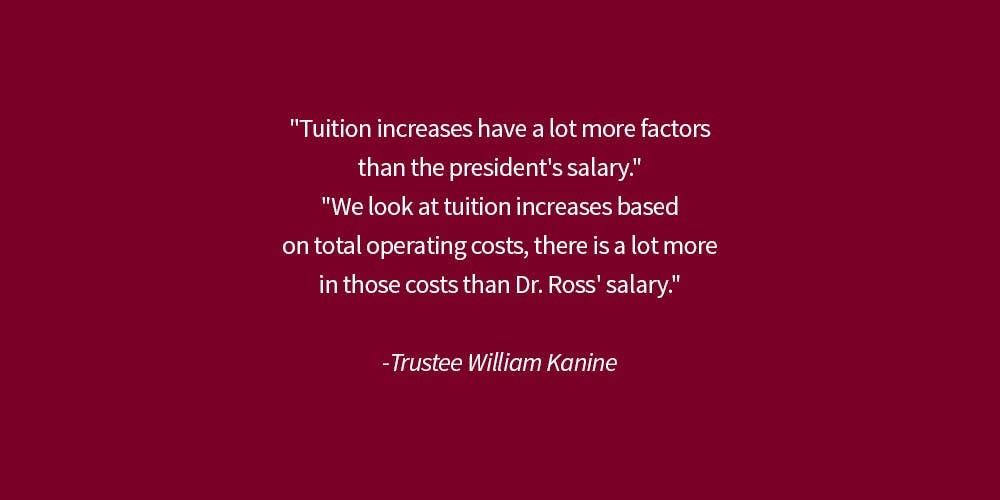Trustees add $30,000 incentive to President Ross' salary
While he is being considered for a position as president of the University of Nebraska, George Ross saw his base salary rise to $430,000.
Effective Jan. 1, the Board of Trustees unanimously voted to raise President George Ross' base salary 15.8 percent, along with an annual retention payment of $30,000, made each June 30 starting in 2015. His current contract expires July 31, 2017.

"I support (Ross) on the Nebraska issue," said Board Chair William Kanine. "If that's what he wants, he deserves the opportunity to get the job he deserves. As trustees, we're happy with what he's done. We have great momentum. We have great things to accomplish and we want him to do it."
Trustees have made it no secret that Ross' status as one of four finalists for president of the University of Nebraska has made them more aggressive in keeping him at Central Michigan University. Several trustees voiced their support and asked him to stay at CMU during the Dec. 9 Board of Trustees meeting.
However, Kanine said the board did not compare salaries with the University of Nebraska in making the adjustment.
Nebraska President James Milliken was paid $431,276 before leaving the position in May 2014, just $1,276 more than Ross' new salary at CMU.
Interim president James Linder is paid an annual salary of $350,000, according to the university's 2014-15 operating budget.
While the decision was made while the campus was closed for the holiday break, Kanine said the extra time was necessary for trustees to make the best decision, as they did not have information comparing Ross' salary with other Mid-American Conference presidents.
"This wasn't any kind of charade to do it when (students) weren't there, it's just the opposite," Kanine said. "We thought we had to make a decision with better information. I think for the betterment of the university it was the best thing to do."
Ross' retention payment was added to apply incentive for staying at CMU each year. Ross would receive an additional $30,000 annually if he remains in his current position for the fiscal year.
Kanine said the measure is common in the private sector and among other schools in the MAC as a way to "put a hook" in employees that are actively being recruited by other employers.
"In the private world it is referred to as shark repellant, you want to put something out there that keeps people from constantly coming in and taking what you have," Kanine said.
Director of Public Relations Steve Smith said the board compared Ross' salary to peer institutions and other universities in the conference.
His former salary of $371,280 placed Ross as the second lowest-paid president in the Mid-American Conference. The lowest, Susan Martin, president of Eastern Michigan University, earns $340,000 per year.
His new salary will place him sixth among the 13 MAC schools, behind the presidents of Kent State, the University of Akron, Northern Illinois, Ohio and Ball State. With the retention payment added, Ross would only be behind President of Ohio University Roderick J. McDavis, who makes $465,000 per year.
Kanine said the additional money for Ross' new salary will be a part of the overall university operating budget but will not directly be responsible for any tuition increases.
"Tuition increases have a lot more factors than the president's salary," Kanine said. "We look at tuition increases based on total operating costs, there is a lot more in those costs than Dr. Ross' salary."




